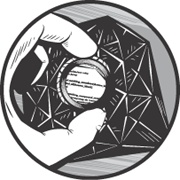Chapter 6. Functionalism with Blocks and Procs

Ruby has two main ancestors: Smalltalk and Lisp.[16] From Smalltalk, Ruby gets its heavy object orientation, which we’ve explored in some depth up to this point. From Lisp it derives several ideas from functional programming, which is a very mathematically inclined approach to programming with a few notable characteristics. First, variables tend to be defined once, without having their values changed later on. Additionally, functions tend to be simple, abstract, and used as building blocks for other functions; the line between functions, which perform operations, and data, on which functions operate, ...
Get Ruby by Example now with the O’Reilly learning platform.
O’Reilly members experience books, live events, courses curated by job role, and more from O’Reilly and nearly 200 top publishers.

